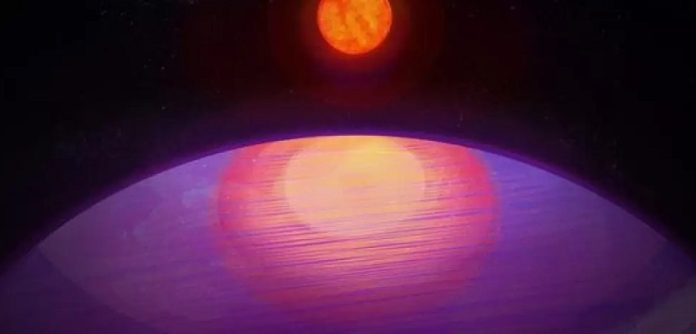
In a surprising twist to what scientists thought they knew about space, a team from Penn State University has found a planet that’s way too big for its star.
This giant planet, more than 13 times the size of Earth, is spinning around an “ultracool” star called LHS 3154, which is much smaller than our sun—nine times smaller, to be exact!
Published in the journal Science, this discovery is shaking up the world of astronomy because it challenges the usual ideas about how planets and their stars come together.
Typically, stars form from huge clouds of gas and dust, and the leftover materials can turn into planets. But the star LHS 3154 is so small that scientists didn’t think it could have enough leftover material to create such a massive planet.
Yet, the planet, named LHS 3154b, exists, making everyone wonder if there’s a lot more to learn about the universe.
This planet is not just any planet—it’s the biggest one ever found orbiting such a small and cold star. The difference in size between this planet and its star is over 100 times greater than the size difference between Earth and the sun.
That’s a lot!
Suvrath Mahadevan, one of the Penn State researchers, said finding this planet was a big shock. “We wouldn’t expect a planet this heavy to be around such a low-mass star,” he mentioned. It’s like finding a tiny tree holding up a giant swing. According to what scientists knew before, this just shouldn’t happen.
To find this unusual planet, the team used a special tool called the Habitable Zone Planet Finder, which was built right at Penn State.
This instrument is really good at spotting planets around very cool stars, which are stars that could potentially have planets with liquid water—important for life as we know it.
This discovery is making scientists rethink how planets and stars are formed. They’re puzzled about how such a big planet could come to be around such a small star. It’s a mystery that’s pushing them to explore new ideas and theories about the universe.
This giant planet orbiting its tiny star shows that space still has lots of secrets waiting to be discovered, and what we learn next could change our understanding of the cosmos.
Source: National Science Foundation.



